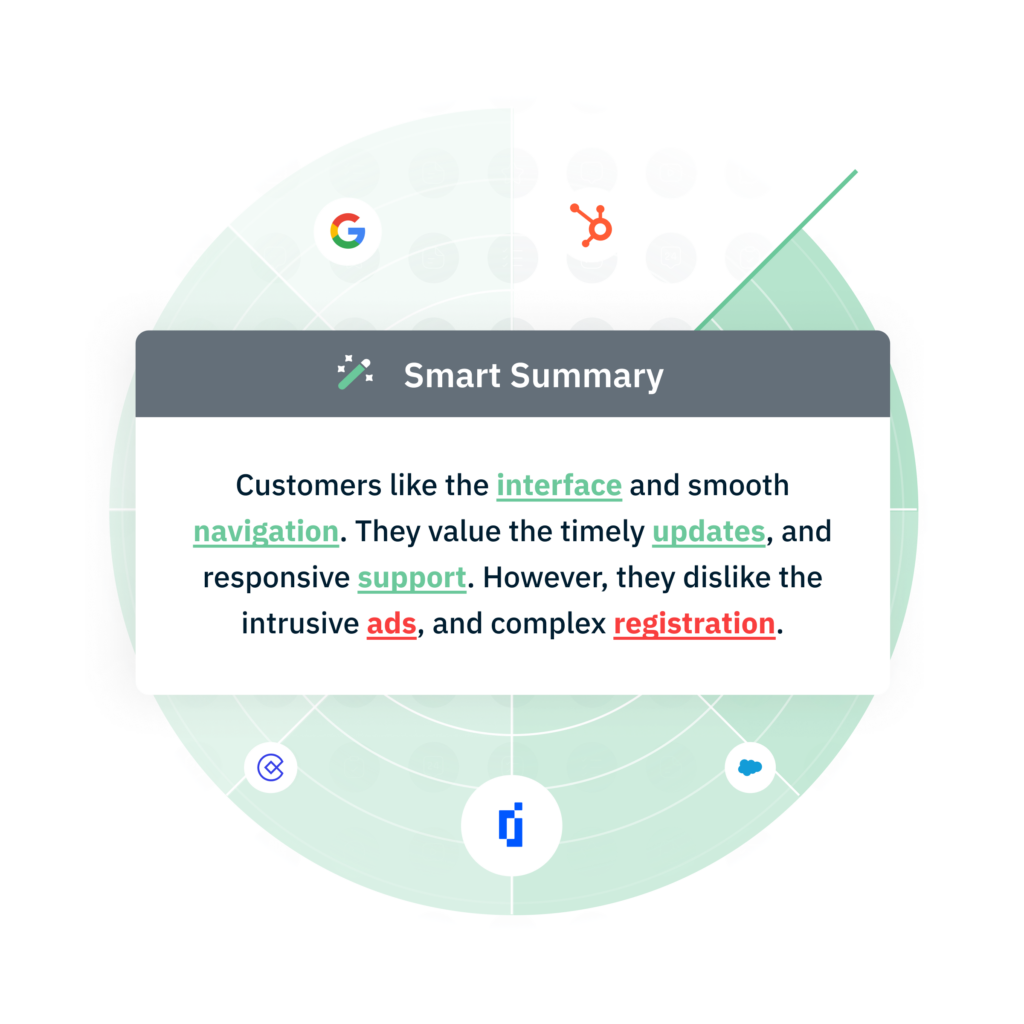The Power of Customer Behavior Analysis
Customer behavior analysis refers to the process of studying, analyzing, and acting on your customers' behavior. Actively analyzing customer behavior can help your business improve operations, marketing efforts, and help build stronger customer relationships.
Did you know that social media is the number one discovery channel for products? Furthermore, when researching a brand or product, most consumers prefer to do their own research rather than speak to a human.
Knowing these consumer behaviors and how they relate to your business can significantly impact your overall business performance. To capitalize on those behaviors, you need to be able to perform customer behavior analysis.
What Is Customer Behavior Analysis?
Customer behavior analysis is the process of studying and interpreting how customers interact with a business at each stage of the customer journey. This involves looking at what customers do, such as browsing, purchasing, or abandoning a page, and understanding why they make those choices. When businesses apply customer behavior analysis, they shift from reacting to customer demands to anticipating them.
Customer Behavior Analysis vs Customer Journey Mapping
Customer journey mapping focuses on visualizing customers’ different pathways with a business throughout their customer experience. The customer journey is not the same process for every customer. Customer behavior analysis seeks to understand the underlying motivations and drivers behind a customer’s decisions. This can include observable actions such as purchase frequency or website clicks as well as inferred behaviors such as willingness to try new products or price changes.
Why Is Customer Behavior Analysis Important
Customer behavior analysis provides information that helps businesses meet customer needs, build stronger relationships, and drive business growth. By understanding customer motivations, your business can make decisions that lead to higher customer satisfaction, loyalty, and profitability. Here are a few reasons why customer behavior analysis is so valuable:
- Enhanced personalization
- Improved customer retention
- Better product development
- Informed marketing decisions
- Competitive advantage
Enhanced Personalization
When you understand how customers interact with products, services, and content, you can personalize experiences in meaningful ways. By identifying specific customer preferences—such as preferred products, content types, or communication channels—you can tailor marketing messages, recommendations, and services to each customer’s needs.
Improved Customer Retention
It is no secret that retaining customers is more cost-effective than acquiring new ones. By analyzing customer behavior, you can identify factors that lead to churn, such as delayed purchases, disengagement, or negative feedback. Early intervention —like offering incentives to at-risk customers or resolving pain points—can prevent customer loss and improve customer churn.
Better Product Development
Customer behavior insights can allow your company to make data-driven decisions about product offerings. By understanding which products are most popular, how they are being used, and what customers are searching for, you can identify gaps in your offering and prioritize the development of certain features or improvements to current ones.
Informed Marketing Decisions
Analyzing customer behavior allows you to craft more effective marketing strategies. Customer behavior data reveals which campaigns, channels, and messaging resonate most with different customer segments. This enables marketers to focus their resources where they’ll have the highest impact.
Competitive Advantage
Understanding customer behavior can be a key differentiator in today’s business environment. If your business can effectively analyze and utilize customer behavior insights, you can stay ahead of your competitors by being more innovative and customer-focused.
Types of Customer Behavior Data
To fully understand customer behavior, you will need to gather different types of data that provide a comprehensive view of behavior, preferences, and engagement. Here are the main categories of customer behavior data that can help you build rich customer profiles:
Demographic Data
- Age
- Gender
- Income level
- Education
- Occupation
Demographic data gives you insight into customer characteristics that often influence their preferences, buying power, and purchasing habits. Demographic data serves as a foundational layer for customer behavior analysis as it helps you segment your audience.
Psychographic Data
- Customer lifestyle
- Interests
- Values
- Attitudes
- Personality traits
Psychographic data unveils the motivations that drive customer behavior. It can help you understand why your customers make certain choices. Using this data, you can construct targeted messages that resonate with individual values and interests.
Behavioral Data
- Purchase history
- Browsing activity
- Engagement with content or promotions
Behavioral data helps you identify patterns in how customers engage with products, websites, or marketing materials. It sheds light on preferred products, purchasing frequency, and typical customer journeys. Using behavioral data, you can improve the user experience based on actual customer behavior.
Transactional Data
- Purchase frequency
- Average order value
- Payment methods
- Return rates
Transactional data provides a snapshot of a customer’s financial interactions with your business. This data can help you identify high-value customers, track purchasing trends, and evaluate the success of certain promotions, packages, or discounts. It also reveals revenue-driving behaviors, which can be valuable information for customer loyalty programs.
Engagement Data
- Email open rate
- Social media interactions
- Website visits
- In-app usage
Engagement data helps you understand the depth of customer interactions with your organization. It can help you identify which channels are most effective for reaching specific customer segments, how engaged customers are with content, and where opportunities exist for deeper engagement.
Customer Behavior Analysis Methods
To effectively analyze customer behavior using the data collected above, you will need to mix qualitative and quantitative data analysis methods. Here are some key methods for analyzing customer behavior:
- Quantitative research
- Quantitative data analysis
- Predictive analytics
- Customer journey mapping
- Cohort analysis
Qualitative Research
Qualitative research and analysis involve asking open-ended questions to encourage customers to share their thoughts in their own words. This can reveal emotional drivers, such as UX frustrations, that may not surface in quantitative data. Open-ended questions can be used in surveys, customer interviews, and focus groups.
Quantitative Data Analysis
Quantitative analysis uses website and/or app analytics combined with CRM data to analyze numerical data. Quantitative data offers a broad view of customer behavior across large segments. The trends identified can inform marketing decisions, product development, and sales strategies.
Predictive Analytics
Predictive analytics models use past historical data, artificial intelligence, and machine learning to make educated predictions about future customer actions, such as likelihood to purchase, churn risk, or response to specific promotions. Predictive analytics allows you to anticipate customer needs and take proactive steps. For example, by identifying customers likely to churn, you can implement retention strategies before you lose a customer.
Pearl-Plaza’s predictive customer analytics solution uses proprietary AI to extract insights from customer data. This allows you to spend more time executing action plans rather than getting caught up in data analysis. One of the biggest benefits of Pearl-Plaza AI is its ability to make large volumes of customer feedback easily digestible in Smart Summaries.

Customer Journey Mapping
Customer journey mapping tracks every touchpoint customers encounter with your organization. This reveals where they may encounter friction, drop off, or engage. It can help you understand how customers progress through the decision-making process. By mapping the customer journey, you can identify areas for improvement in your customer experience.
Pearl-Plaza can go one step further with AI Journey Insights, which helps businesses transform multichannel customer feedback into actionable strategies. By gathering data from sources like surveys, reviews, and calls, the Pearl-Plaza platform uses NLP and AI to identify and categorize key journey touchpoints. Generative AI then evaluates each touchpoint’s impact on customer experience and suggests improvements. These insights are visualized in a way that inspires teams to take ownership, collaborate on solutions, and explore potential outcomes through simulations, driving meaningful changes to enhance the customer journey.
Cohort Analysis
Cohort analysis tracks the behaviors of customers who have been grouped together into cohorts. These cohorts are created based on shared characteristics or behaviors like the month of purchase, campaign type, or location. Cohort analysis tracks the behaviors of these specific groups over time, which allows you to observe how certain factors influence long-term engagement, retention, and churn.
Tools for Customer Behavior Analysis
The effectiveness of your customer behavior analysis is largely dependent on the tools you use to complete it. Here are some of the top customer behavior analysis tools to be aware of:
1. Pearl-Plaza
Pearl-Plaza offers a comprehensive suite of CX tools designed to capture customer feedback across various touchpoints, including surveys, social media, and online reviews. Using AI-driven analytics, Pearl-Plaza provides actionable insights to help companies improve customer satisfaction and loyalty. Its platform also includes sentiment analysis, benchmarking, and journey mapping to offer a full view of customer experiences and emotional drivers.
2. Qualtrics
Known for its experience management platform, Qualtrics enables businesses to collect and analyze customer, employee, product, and brand experience data. Its powerful analytics and feedback collection tools make it easy for companies to understand customer expectations and pain points. With capabilities like predictive intelligence and real-time insights, Qualtrics helps businesses anticipate customer needs and take action to improve experiences quickly.
3. Medallia
Medallia specializes in customer feedback and experience management, using AI and machine learning to analyze customer interactions across web, social, mobile, and in-store channels. Medallia’s platform is designed to capture real-time feedback and deliver insights directly to employees, enabling organizations to respond quickly to customer needs. With features like text and speech analytics, Medallia helps businesses understand customer sentiment and trends.
4. Zendesk
Zendesk provides a robust customer service and support platform that integrates CX insights into ticketing, messaging, and live chat. Designed for ease of use, Zendesk offers tools for tracking customer issues, measuring satisfaction, and analyzing behavior through support interactions. Its reporting capabilities help companies identify recurring issues, improving customer support quality and response times.
5. Sprinklr
Sprinklr is a unified platform for customer experience management, focusing heavily on social media and online engagement. Its tools track customer sentiment, monitor brand mentions, and provide detailed analytics across various channels. Sprinklr’s CX suite includes social listening, customer care, and AI-driven insights, helping businesses gain a 360-degree view of customer sentiment and preferences on digital and social platforms.
How to Use Customer Behavior Analysis to Improve the Customer Experience
Customer behavior analysis is invaluable for improving the customer experience at your organization. Here are some ways your business can leverage customer behavior data to boost customer experience and business performance:
Personalized Marketing Campaigns
Customer behavior insights enable you to create highly personalized marketing messages that resonate with the segment’s unique interests and needs. Tailored messaging, such as targeted emails or personalized content suggestions, can help increase engagement and conversion rates.
Optimized Product Recommendations
By analyzing purchase history, browsing behavior, and more, you can suggest relevant products or services that create a more satisfying and valuable experience for your customers. This can also help you increase cross-sell and upsell opportunities by presenting items that customers are more likely to purchase.
Enhanced Customer Support
Customer behavior data lets your business anticipate common customer issues and proactively offer support. For example, if customers frequently abandon their carts at a particular customer journey stage, companies can address this with targeted assistance.
Improved Website and App Experiences
Customer behavior analysis can reveal which website or app features users find most valuable and which ones cause frustration. By optimizing navigation, layout, and content based on behavior data, you can create a more intuitive and enjoyable user experience.
Predictive Retention Strategies
Analyzing behavior patterns can help businesses identify customers at risk of churning and implement timely retention strategies, such as personalized offers or re-engagement emails, to keep them engaged.
Challenges in Customer Behavior Analysis
While customer behavior analysis can offer many benefits, some businesses may face challenges in effectively gathering, interpreting, and applying behavior data. Here are some common obstacles:
Data Privacy and Compliance
With regulations like GDPR and CCPA, businesses must handle customer data responsibly. Ensuring compliance and maintaining data security can be complex, especially when analyzing large amounts of data from various sources.
Data Overload
Businesses collect vast quantities of data from multiple channels, and not all is useful. Sorting through data to identify relevant, actionable insights requires careful filtering and prioritization to avoid getting overwhelmed.
Interpreting Data Accurately
Misinterpreting customer behavior data can lead to flawed decisions. Without careful analysis, businesses may make incorrect assumptions about customer preferences or behaviors, resulting in ineffective strategies.
Integrating Data Across Platforms
Many companies use multiple tools for gathering and analyzing data, which can lead to siloed information. Integrating data across platforms ensures a unified view of the customer but can be challenging without the right infrastructure.
Acting on Insights Effectively
Gathering data is only the first step; applying insights requires coordination across teams and often significant changes to processes. Without the right implementation strategies, valuable data insights may go unused.
Future Trends in Customer Behavior Analysis
Customer behavior analysis is evolving as new technologies and customer expectations reshape the landscape. Here are some trends to watch:
1. AI and Machine Learning for Deeper Insights
AI and machine learning algorithms are becoming essential for identifying complex behavior patterns and predicting future actions. These technologies make it easier to personalize interactions at scale, enhancing customer satisfaction and engagement.
2. Behavioral Segmentation
Moving beyond traditional demographic segmentation, more companies are adopting behavioral segmentation, grouping customers based on shared actions, preferences, or interactions. This approach enables more targeted marketing and product strategies.
3. Real-Time Data Analysis
With real-time analysis, businesses can respond to customer actions immediately, offering personalized experiences on the spot. Real-time analysis is particularly useful in e-commerce and customer support, where rapid responses can lead to higher conversion rates and improved satisfaction.
4. Omnichannel Behavior Tracking
As customers interact with brands across multiple channels—online, mobile, in-store—there’s a growing need for omnichannel behavior tracking. This provides a complete view of the customer journey, helping businesses maintain a cohesive experience regardless of where interactions occur.
5. Increased Focus on Data Ethics and Transparency
With rising customer concerns around privacy, businesses are focusing on data ethics, transparency, and control. Many are implementing practices that allow customers to understand, access, and control how their data is used, building trust and enhancing brand loyalty.
Improve Customer Behavior Analysis with Pearl-Plaza
Pearl-Plaza’s customer experience platform is the premier solution for customer behavior analysis. Pearl-Plaza has been recognized as a leader in both AI and NLP. These solutions offer any business the ability to view comprehensive data about their customers’ behavior. See what Pearl-Plaza can do for you by scheduling a demo today!
References
HubSpot. Consumer Trends Report. (https://offers.hubspot.com/consumer-trends). Accessed 11/13/2024.






